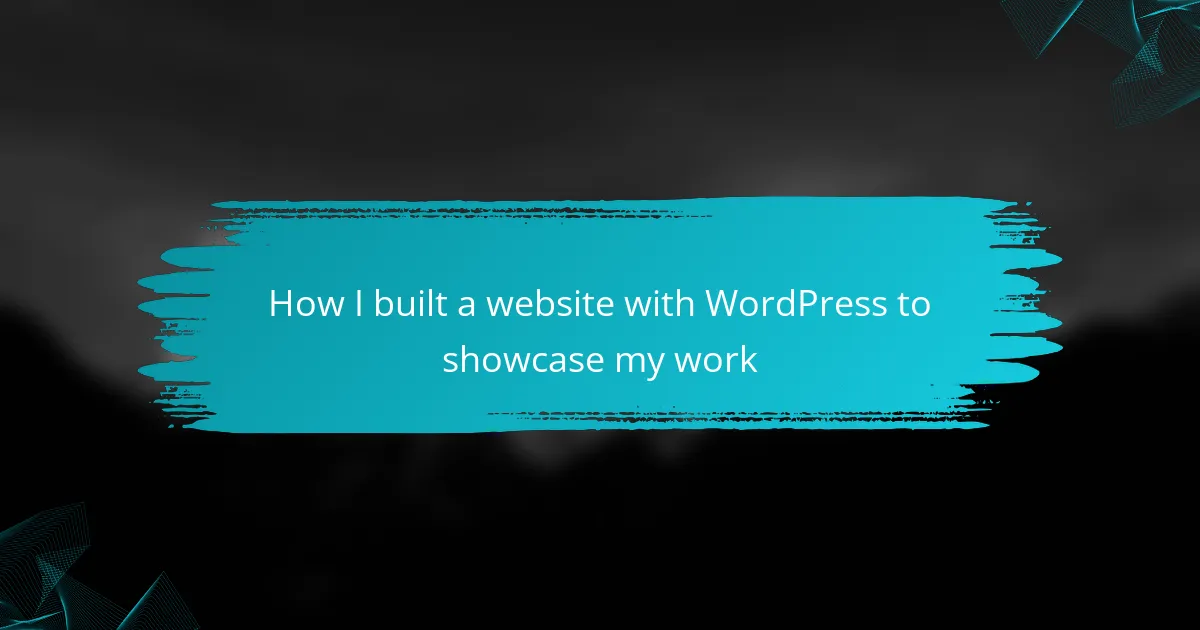Key takeaways
- Wedding photography captures emotions and unique stories, creating lasting memories for couples.
- An online portfolio showcases a photographer’s style and builds trust with potential clients.
- WordPress is an excellent platform for photographers due to its flexibility, supportive community, and customizability.
- Effective marketing strategies include SEO optimization, social media engagement, and networking with industry professionals.
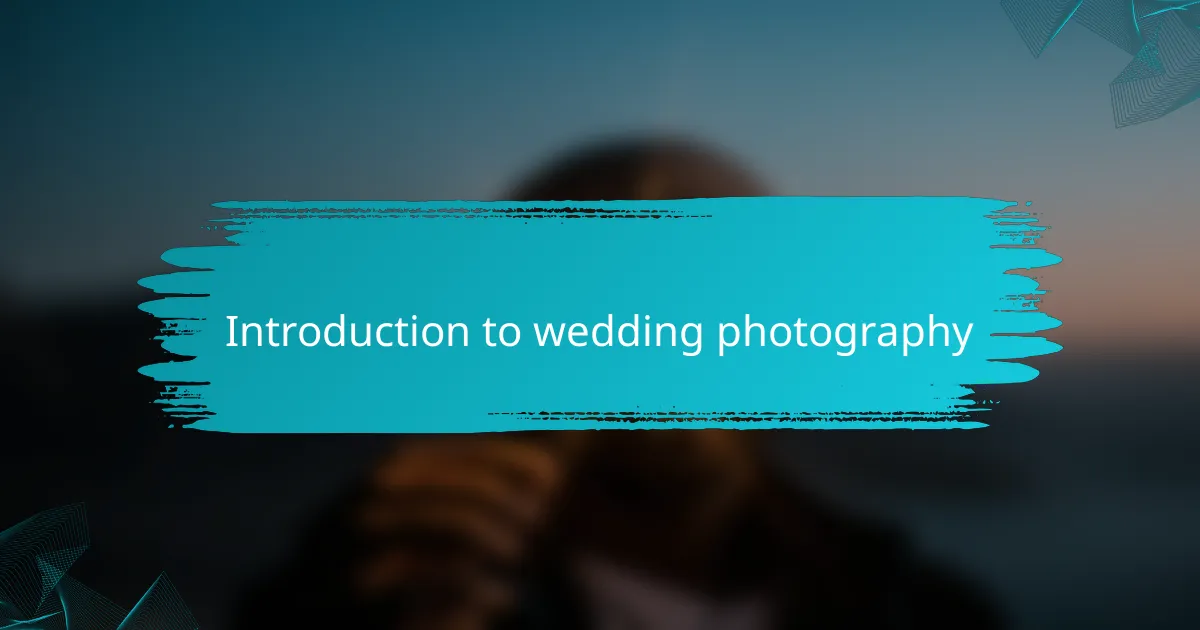
Introduction to Wedding Photography
Wedding photography holds a special place in my heart. It’s more than just taking pictures; it’s about capturing the emotions, joy, and unique stories of each couple’s special day. I remember the first wedding I shot, with tears of happiness rolling down the bride’s cheeks—it reminded me why I fell in love with this art form.
Every wedding offers a chance to create beautiful memories and connect with couples in their most vulnerable moments. Through thoughtful composition and the right lighting, the images transform into timeless treasures that families cherish for generations.
- Capturing the essence of love and connection.
- Telling a unique story through each photograph.
- Documenting fleeting moments, like a shared glance or a heartfelt laugh.
- Creating lasting memories that can be relived over time.
- Building authentic relationships with clients to understand their vision.

Importance of a Online Portfolio
Having an online portfolio is crucial for any wedding photographer. It not only showcases your unique style but also builds trust with potential clients. I remember the first time I launched my portfolio – it was so rewarding to finally share my work and see people connect with my vision.
When I approach clients, they often mention how much they appreciate being able to view my previous weddings online before making a decision. It gives them a sense of reassurance, knowing I have the experience and creativity to capture their special moments.
Here are some key reasons why an online portfolio is essential for wedding photography:
- Accessibility: Clients can view your work anytime, anywhere, which saves you from countless in-person meetings.
- Showcase Creativity: You have the freedom to display your best work and highlight the variety of styles and themes you specialize in.
- Brand Building: A well-curated portfolio helps in establishing your brand identity, making it easier for clients to recognize and remember you.
- Social Proof: Positive testimonials and client stories featured in your portfolio enhance credibility and allure for prospective clients.
- Easy Updates: You can regularly update your portfolio with your latest work, ensuring it reflects your current style and capabilities.
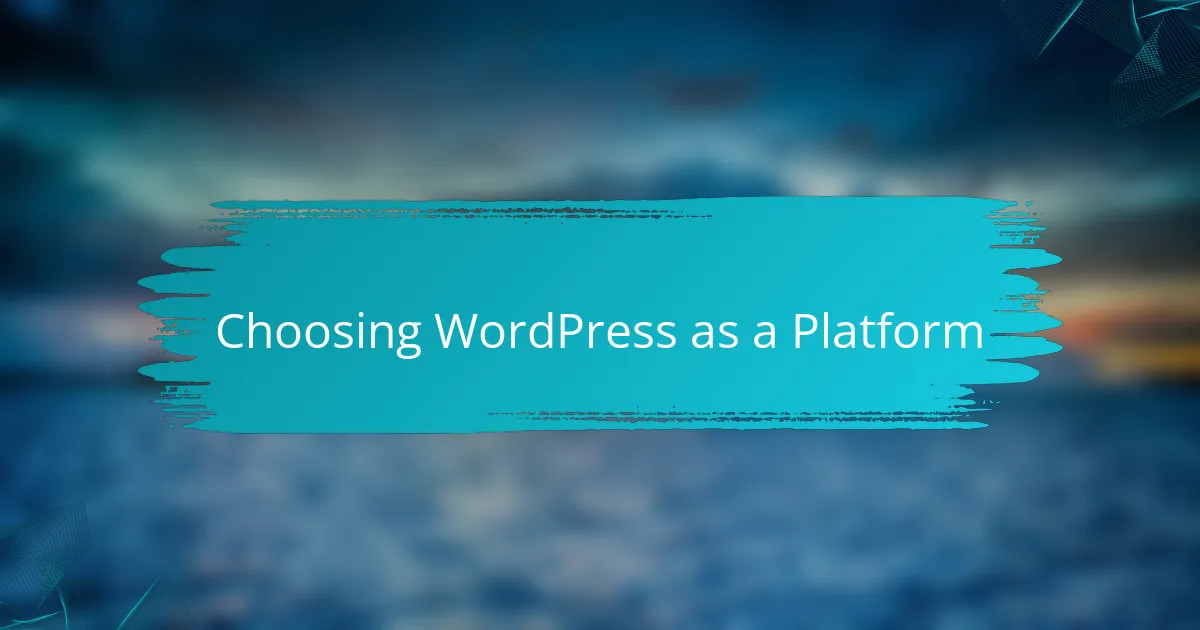
Choosing WordPress as a Platform
Choosing WordPress as a platform was a decision rooted in both practicality and passion. I’d heard about its user-friendliness, but what really drew me in was its flexibility. It felt like the ideal canvas to showcase my photography, allowing me to customize the layout and design in a way that felt authentic to my artistic vision.
From my experience, the vast array of themes specifically designed for photographers made it easy to find one that resonated with my style. I remember scrolling through countless options until I stumbled upon a clean, elegant theme that amplified my images. It was thrilling to see how each template could bring a different feel to my work. Can you imagine the joy of seeing your photos pop against a backdrop that complements their essence?
Another key point for me was the supportive community and abundance of plugins available with WordPress. I realized that I wasn’t navigating this journey alone; there were plenty of resources and fellow photographers who had ventured down the same path. This sense of community offered reassurance and inspiration, making the process of not just setting up my site, but effectively managing it, much more enjoyable.
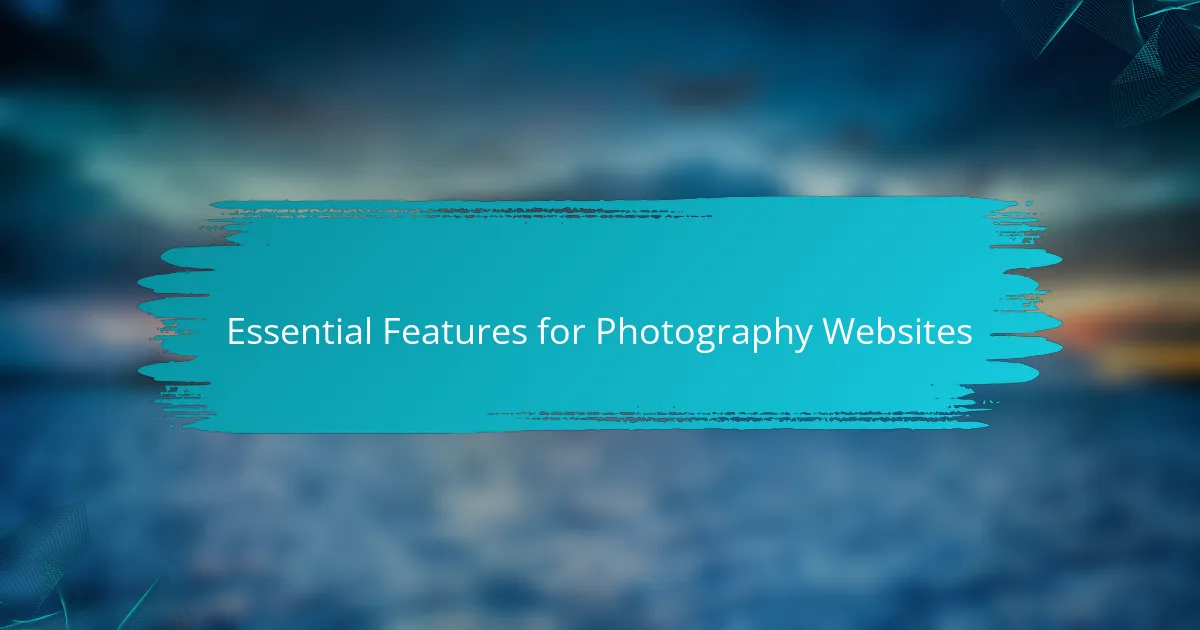
Essential Features for Photography Websites
Showing off your photography requires certain essential features that not only engage visitors but also convert them into potential clients. One of the most important aspects is the gallery layout. I recall the impact of choosing a full-width grid layout for my images; it made my work feel immersive. When clients visit, they want to experience the emotions captured in each moment—an eye-catching gallery can do just that.
Another must-have is a user-friendly navigation system. I learned the hard way that if a visitor struggles to find what they’re looking for, they might leave without truly exploring my work. Implementing clear menu categories, such as “Weddings,” “Engagements,” and “Testimonials,” transformed the user experience. It allowed potential clients to easily dive into the sections most relevant to their interests. Have you ever thought about how many times you’ve bounced from a website simply due to confusion?
Finally, integrating a contact form is crucial. I remember the relief and excitement when I added it to my website—it simplified the process for inquiries. With a straightforward form, clients could reach out directly, allowing me to connect with them immediately. This feature not only facilitates communication but also empowers clients to express their vision. After all, what’s more important than understanding a couple’s love story?

Step by Step Website Setup
When I set out to build my website with WordPress, I knew I wanted every step to reflect my passion for wedding photography. It’s like curating a portfolio; each detail matters. I started by choosing a hosting service that felt right for my needs, balancing cost and reliability, which, let me tell you, made all the difference in my experience.
Here’s a quick step-by-step list of what I did:
- Selected a reliable hosting provider and registered my domain name.
- Installed WordPress through the hosting dashboard, which was surprisingly easy.
- Chose a clean, visually appealing theme that highlighted my photography.
- Customized the theme to match my artistic style with colors and fonts.
- Installed essential plugins for SEO and image optimization.
- Created key pages: Home, Portfolio, About, and Contact.
- Added high-quality images of my best work, ensuring they were not too large for faster loading times.
- Tested the site on different devices to make sure it looked great everywhere.
Every step felt like a mini-victory, especially when I saw my vision come together on screen.

Personalizing Your Photography Site
Personalizing your photography site is all about expressing your unique identity and artistic vision. I remember the moment I decided to tweak the color palette to reflect the warmth and vibrancy of my photography. Each color choice told a story, echoing the love and emotion captured in the weddings I photograph. Can you imagine how impactful that first color impression can be for a potential client?
Adding personal elements, like a blog where I share behind-the-scenes stories and tips, has transformed my website into more than just a portfolio; it’s become a space for connection. I once wrote about a couple who had their first dance under a starlit sky, and the response was incredible. It felt like people were not only seeing my work but also experiencing the love stories behind the lens. How do you want your visitors to feel when they explore your site?
Moreover, incorporating my own photography journey into the “About” page created authenticity. When potential clients read about my passion for capturing love, it resonated with them on a deeper level. Sharing my journey, including my first wedding and the lessons learned, helped establish trust. After all, isn’t it the personal touches that make us feel connected in a digital world?
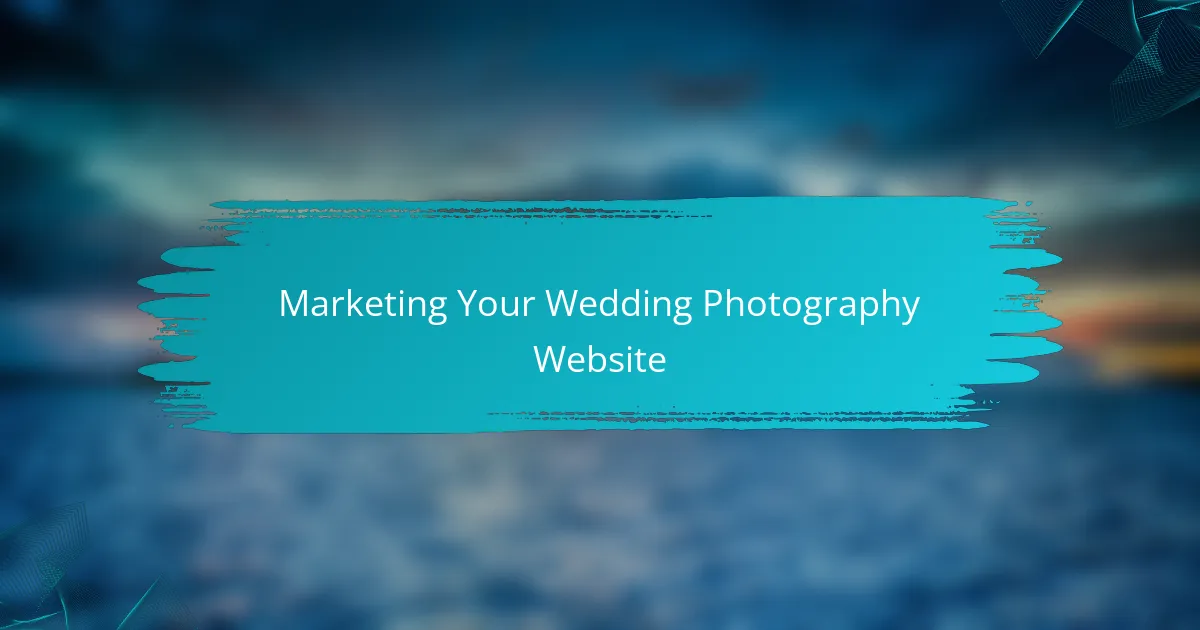
Marketing Your Wedding Photography Website
Marketing your wedding photography website effectively is about connecting with potential clients in a meaningful way. I remember the excitement I felt when I first shared my portfolio online and the rush of inquiries that followed. It became clear that showcasing my work wasn’t just about beautiful photos; it was about telling a story that resonates with couples planning their special day.
To expand your reach and attract more clients, consider implementing the following strategies:
- Optimize your website for search engines (SEO) to increase visibility in search results.
- Utilize social media platforms like Instagram and Pinterest to share engaging content and sneak peeks of your work.
- Network with other wedding professionals, such as planners and venues, to create referral partnerships.
- Invest in Google Ads or social media advertising to target couples in your area actively looking for a photographer.
- Create blog content that offers valuable tips and insights into wedding planning, positioning yourself as an industry expert.
